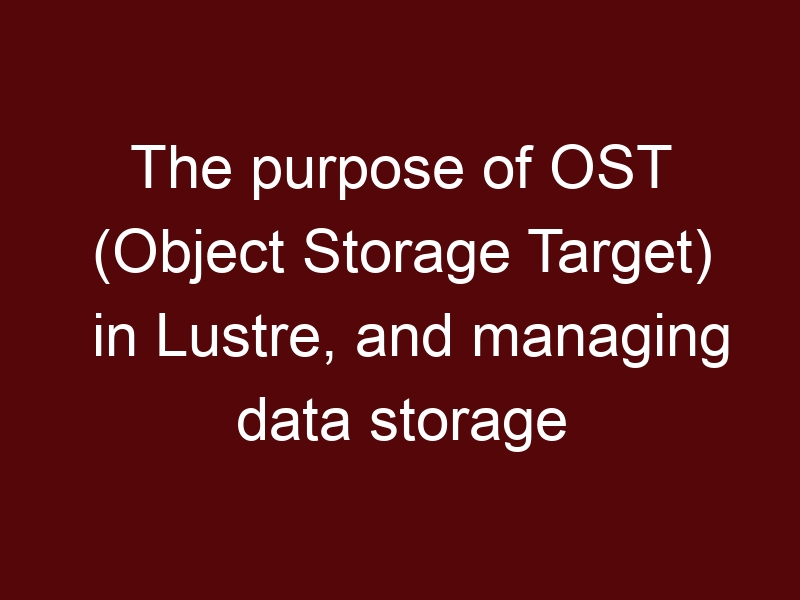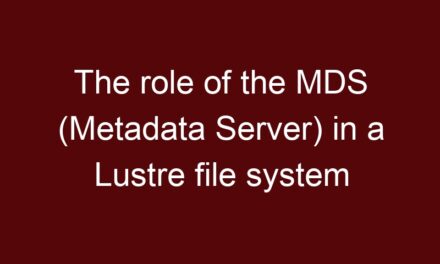The Object Storage Target (OST) is a crucial component of the Lustre file system, responsible for managing the actual data storage in the Lustre distributed file system. OSTs are storage servers with one or more physical storage devices, such as hard disk drives (HDDs) or solid-state drives (SSDs). Each OST manages a portion of the file data and works in parallel with other OSTs to achieve high-performance and scalable data storage. Here’s the purpose of OSTs in Lustre and how they manage data storage:
- Data Storage Management: The primary purpose of OSTs is to store the actual file data in the Lustre file system. When a client writes data to Lustre, the data is distributed across multiple OSTs in parallel using a technique called striping. Striping spreads data across OSTs, allowing multiple OSTs to be accessed simultaneously during read and write operations.
- Striping: Striping in Lustre means that a file is divided into stripes, and each stripe is written to a different OST. The stripes can be of varying sizes, and the striping parameters can be tuned based on the Lustre file system configuration and performance requirements. Striping improves I/O performance by utilizing the aggregate bandwidth of multiple storage devices and avoiding hotspots on individual disks.
- Parallel I/O Operations: OSTs enable parallel I/O operations in Lustre. When a Lustre client reads or writes data, it can simultaneously access multiple OSTs to retrieve or store data in parallel. This parallelism significantly enhances data transfer rates and supports large-scale, data-intensive workloads typical in high-performance computing and big data applications.
- Data Redundancy (Optional): Lustre supports data redundancy through the use of RAID (Redundant Array of Independent Disks) or replication. Administrators can configure OSTs to replicate data, ensuring that multiple copies of the data are stored on different OSTs. Data redundancy helps improve data durability and fault tolerance in case of hardware failures.
- Data Placement Policies: Lustre administrators can define data placement policies to optimize data storage based on specific application requirements. For example, they can allocate certain OSTs for specific applications or data sets to segregate workloads or improve performance for certain tasks.
- Dynamic Data Management: Lustre allows administrators to add or remove OSTs from the file system dynamically. This dynamic data management enables the Lustre file system to scale flexibly and adapt to changing storage needs.
- Data Recovery: In case of hardware failures or data corruption, Lustre can recover data from OSTs with redundancy or parity information. Redundant copies of data on other OSTs can be used to reconstruct lost or damaged data.
In summary, the Object Storage Targets (OSTs) in Lustre play a fundamental role in managing data storage for the distributed file system. They enable parallel I/O operations through striping and support high-performance, scalable data storage for demanding applications in high-performance computing and large-scale data processing environments.





